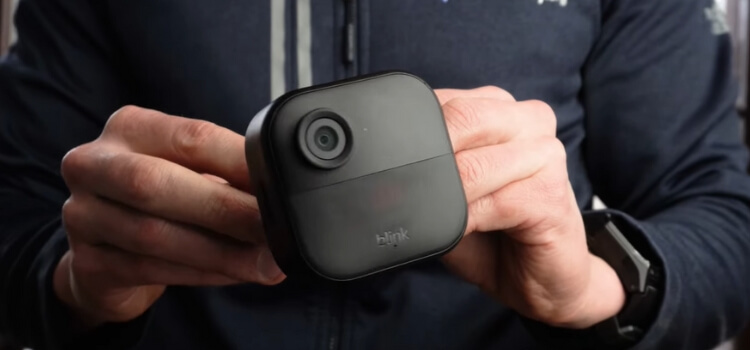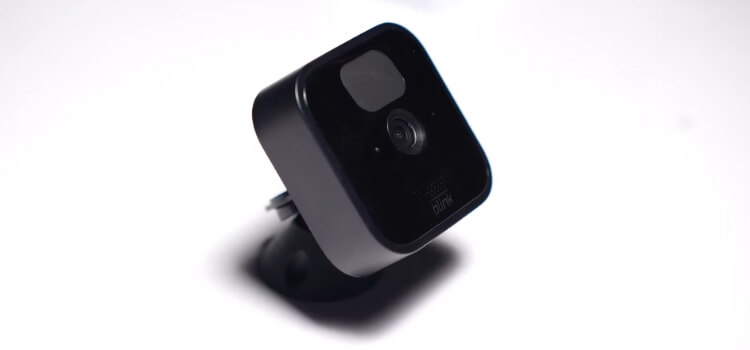As an Amazon Associate, I earn from qualifying purchases
Your Blink camera may not be recording due to low battery, Wi-Fi issues, or motion detection settings. If your Blink camera is not recording, it could be due to low battery, poor Wi-Fi signal, or incorrect motion detection settings.
To troubleshoot the issue, ensure that the camera has sufficient battery, a strong Wi-Fi connection, and the motion detection feature is properly configured. Additionally, check for any firmware updates for your camera and ensure that it is placed within the recommended range of the sync module.
By addressing these factors, you can resolve the recording issue and ensure that your Blink camera captures the desired footage effectively.

Introduction To Blink Camera Recording Issues
If your Blink camera is not recording, it could be due to various reasons such as low battery, poor internet connection, or motion detection settings. Ensure the camera is fully charged, the Wi-Fi signal is strong, and the motion detection is properly configured to troubleshoot the issue.
- Video not recording
- Delay in motion detection
- Recording stopping unexpectedly
Address common problems and offer solutions for Blink camera recording issues.
Initial Checks Before Troubleshooting
Before delving into advanced troubleshooting steps for your Blink camera not recording, it’s essential to conduct some initial checks. These preliminary actions can often help identify and resolve common issues efficiently.
Power And Connectivity Status
Ensure the camera has proper power supply and the indicator lights are functional. Check if the camera is properly connected to Wi-Fi and has a stable internet connection.
Software Updates And Firmware
Verify if the camera’s software is up to date and install any available firmware updates to ensure optimal performance.
Camera Placement And Installation Factors
When it comes to ensuring that your Blink camera is working optimally, the placement and installation factors play a crucial role. By considering these elements, you can ensure that your camera operates effectively, capturing the footage you need for your security and peace of mind.
Optimal Placement For Detection
Placing your Blink camera in an optimal position is essential for maximising its detection capabilities. Ensure that the camera is positioned at a height of 5 to 9 feet above ground level to achieve the best coverage. Additionally, angle the camera downward slightly to focus on the desired area and minimise the capture of unnecessary movement in the background.
Physical Obstructions And Interference
Consider the presence of any physical obstructions or interference that may affect the performance of your Blink camera. Avoid placing the camera behind glass windows or other reflective surfaces, as these can cause glare and affect the image quality. Furthermore, ensure that the camera is not obstructed by large objects or vegetation that may impede its field of view.
Understanding Motion Detection Settings
If your Blink camera is not recording, it might be due to the motion detection settings. Adjust the sensitivity and motion zones to ensure they capture all necessary movements. Check for any obstructions or low battery power that could be affecting its performance.

Wi-fi Signal And Connectivity Issues
When it comes to troubleshooting issues with your Blink camera, Wi-Fi signal and connectivity problems can often be the culprit behind the camera not recording as expected.
Improving Wi-fi Strength
If your Blink camera is not recording, it may be due to a weak Wi-Fi signal. You can enhance the Wi-Fi strength by positioning your router in a central location and away from obstructions. Additionally, consider using a Wi-Fi extender or a mesh network to broaden the coverage area.
Resolving Wi-fi Interruptions
Intermittent Wi-Fi interruptions can disrupt the recording capabilities of your Blink camera. To address this, ensure that no physical obstructions are blocking the signal path between the router and the camera. Also, minimize interference from other electronic devices by positioning them away from the Wi-Fi router.
Battery Life And Performance
Checking Battery Status
To ensure your Blink camera is functioning optimally, it’s important to regularly check the battery status. Access the Blink app and navigate to the camera settings to view the current battery level. If the battery is low, it’s crucial to recharge or replace it to maintain continuous recording functionality.
Tips For Extending Battery Life
- Place the camera in an area with minimal motion to reduce unnecessary recordings.
- Ensure the camera is positioned away from direct sunlight to prevent overheating, which can drain the battery.
- Activate the motion detection feature only when necessary to conserve battery power.
- Regularly clean the camera lens and sensors to maintain optimal performance and reduce power consumption.
- Consider using the Blink camera’s power-saving mode during periods of inactivity to extend battery life.
Troubleshooting With The Blink App
If your Blink camera is not recording, you can perform troubleshooting using the Blink App. Let’s explore two key methods to resolve this issue: App Permissions and settings and Re-syncing the Camera with the App.
App Permissions And Settings
Check if the Blink App has the necessary permissions on your device for proper camera operation. Verify that the app settings allow for recording and storage access.
Re-syncing The Camera With The App
To ensure proper functionality, re-sync your camera with the Blink App. This process can help resolve any connectivity issues between the camera and the app.
Advanced Solutions And Firmware Resets
If your Blink camera is not recording, advanced solutions and firmware resets can help resolve the issue.
Factory Reset Procedures
To perform a factory reset on your Blink camera, follow these steps:
- Step 1: Open the Blink app and select the camera experiencing issues.
- Step 2: Go to the camera settings and choose the option for factory reset.
- Step 3: Confirm the reset action and wait for the process to complete.
When To Contact Blink Support
If the problem persists after trying advanced solutions and factory resets, it’s time to contact Blink support.
- Reasons to Contact Support:
- Unresolved recording issues despite troubleshooting.
- Continuous camera malfunctions after resets.
- Any other technical concerns affecting camera performance.
Preventive Measures And Regular Maintenance
Ensuring the proper functioning of your Blink camera requires preventive measures and regular maintenance. By proactively addressing potential issues, you can maximize the performance and longevity of your device.
Scheduled Testing And Cleaning
Regularly conduct scheduled testing to check the functionality of your Blink camera. Perform cleaning routines to remove dirt or debris that may obstruct the lens or sensors.
Staying Updated With Software Releases
Stay informed about software releases for your Blink camera to ensure you have the latest features and security patches. Regularly update the software to maintain optimal performance.

Conclusion And Summary Of Quick Fixes
To summarize, there are several quick fixes to try if your Blink camera is not recording. Check the WiFi connection, ensure the camera is armed, and verify the camera’s settings. Additionally, consider updating the firmware and checking for any physical obstructions.
Introduction:
In conclusion and summary of quick fixes, it is essential to understand the quick and easy solutions to resolve the issue of Blink camera not recording. After trying out different troubleshooting methods, it’s time to recap the solutions that worked the best.
Recap of Solutions:
Here is a quick recap of the solutions to fix the Blink camera not recording issue:
1. Check the Wi-Fi Signal: Ensure that the Blink camera is within range of the Wi-Fi signal. If it is out of range, move it closer to the router.
2. Restart the Blink Camera: Restart the Blink camera by unplugging it from the power source and plugging it back in. This will help to reset the camera’s connection.
3. Check the Camera Settings: Make sure that the camera settings are configured correctly. Ensure that the camera is armed, and the recording schedule is set up correctly.
4. Update the Blink Camera Firmware: Check for any firmware updates and install them if available. This can help to resolve any software bugs or issues.
Final Thoughts on Ensuring Reliable Recording:
It is crucial to ensure that the Blink camera is set up correctly to guarantee reliable recording. Always check the camera settings and firmware updates regularly. In addition, ensure that the Wi-Fi signal is stable and that the camera is within range.
Conclusion:
In conclusion, if your Blink camera is not recording, there are several quick and easy solutions to try. By following the above recap of solutions, you can resolve the issue and ensure reliable recording. Remember to keep the camera settings and firmware up-to-date for optimal performance.
Frequently Asked Questions
Ensure camera is armed, motion detection is enabled, and camera lens is clean for proper functioning.
Check if the camera is offline or motion detection is disabled.
Restart the camera, ensure Wi-Fi connection, update firmware.
Check storage capacity, format SD card, contact customer support.
Yes, weak Wi-Fi can cause recording issues, position closer.
Conclusion
Based on the above-discussed reasons, it’s clear why your Blink camera may not be recording. However, it’s essential to note that some of these issues can be resolved through simple troubleshooting steps such as resetting the device, checking the internet connection, and ensuring that the camera is placed in the right position.
By following these guidelines, you can get your Blink camera up and running in no time. Remember, regular maintenance can go a long way in ensuring that your security camera stays in tip-top shape.
As an Amazon Associate, I earn from qualifying purchases
Leave a Reply